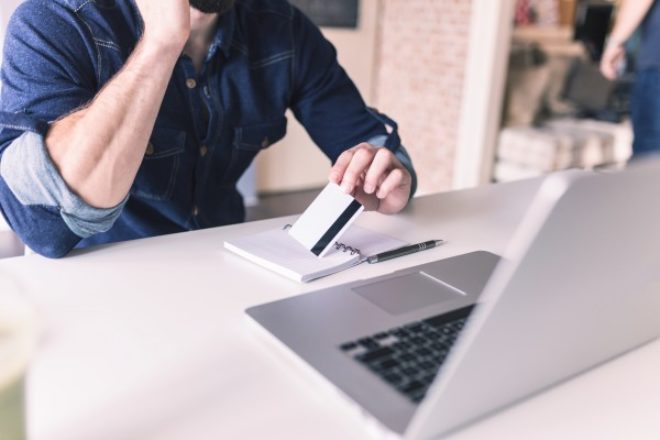
Buy now pay later (BNPL) opportunities are proliferating like mad, popping up at online checkouts everywhere — and some in-person checkouts as well.
They seem harmless enough. In many cases you get your merch now and pay across the next six weeks; 25 percent at time of purchase, 25 percent each of three more times. No interest, no fees. What’s not to like?
The allure of getting something for nothing is hard to pass up. The BNPL companies are raking in the money, but at what cost — and who is paying?
How Buy Now Pay Later Works for the Consumer
Though there are many different companies jumping on the BNPL bandwagon, and hence many variations in the details, there are primarily two types of BNPL systems.
One is a short-term interest free loan. You get the merchandise with 25 percent down and owe the BNPL company the remainder. You select the BNPL option at checkout and get approved or denied very quickly.
Though it helps to have established an account with a provider, you can do it at checkout; it’s that quick. You set up a credit or debit card for the subsequent automatic payments.
The merchants offer the BNPL option through one of the providers, possibly more than one, but one is the norm. You need to go through the BNPL option provided; you can’t use them unless the merchant is set up for that provider. You also have a minimum purchase requirement to use the service, typically around $35.
The BNPL provider pays the merchant, less their fee. If you make your payments on time, you do not pay for the service.
If you pay late, you will have a late charge; if your payment doesn’t go through you, will also have a fee. Some providers give you limited options where you can postpone a payment a couple of days without a charge.
This is typically limited to a couple times a year; you can’t do it repetitively. If you are late again when the payment comes due two weeks later, you get hit with another fee. These fees add up quickly.
That’s pretty straight-up: You get the merchandise with 25 percent down; you have three more payments to make, each due two weeks after the last. Afterpay is an example of the short-term loan type system, and a big player in this field.
Another way this works is as a longer-term — but still short-term — loan, in which you select how long you want to take to pay back the BNLP provider.
Typically this would be across a period of three months to a year for most purchases, or up to three years for some large purchases. The BNLP provider shows you up front what your monthly payment would be and the total cost of interest — you typically do pay the interest for this type of BNPL.
You can see the options and select which one you want to go with. In some cases the interest rate will be zero, but it also can be very high if you have less than stellar credit.
Unlike the very short-term BNPL systems, these do check your credit and report to the credit bureaus. You may also be able to use these in cases where there is not a BNPL option at checkout; you can apply and get a single use card for the purchase if approved.
These also allow for potentially larger purchases, with caps of somewhere around $15,000 for consumers with very good credit. Affirm is an example of this type of system.
How Buy Now Pay Later Works for the Merchant
The merchant pays a transaction fee for your BNPL use. This is typically higher than the fee they would pay for credit card processing. Where the normal range for credit cards is one to 3 percent for each transaction, BNPL providers typically charge 4 to 6 percent for each transaction.
You might wonder why merchants would be willing to pay so much more than they do for credit card processing. It seems like a lot. After all, it is a lot.
Merchants report significant increases in sales using BNPL systems. They aren’t replacing many credit card purchases with something more expensive — they are getting additional sales.
Some of the BNPL sales literature is reporting typical merchant sales increases of over 20 percent by adding a BNPL option at checkout. From a merchant’s standpoint, it is a low-cost way to produce that kind of increase in sales.
The merchant gets paid up front from the BNLP provider; for the merchant it works just like a credit card, only with a higher cost.
Cautions for Buy Now Pay Later Users
It is easy to get in deep with BNPL. Though the providers will typically limit your total purchases, there are many providers. Consumers can easily overextend themselves.
Consumers taking advantage of BNPL are more likely to be young, and lower income, often students or part-time workers. They may not have the financial experience to manage these additional payments and may not have additional resources if any unusual expenses crop up.
Consumers may also find returning items and getting a refund to be more challenging. Many online stores provide very quick refunds for returned merchandise.
With the BNPL provider in the middle, there is an additional layer of complexity. You may have made one or more payments by the time you make the return and could even incur additional payments while your merchandise is in transit or before the return is fully processed.
This may be especially problematic for low-income consumers who don’t have excess resources to use while waiting for their refund.
Consumers considering BNPL would generally see themselves not incurring fees; after all, if you make your payments on time, you don’t pay any fees. That said, it seems that many consumers are not making their payments on time, putting themselves into even more debt inadvertently.
When Credit Makes Sense for the Consumer
Used properly BNPL is a good deal for the consumer. You get the merchandise, in many cases with an interest free short-term loan.
The no-interest short-term BNPLs do not report to credit bureaus unless you are late, so you can make transactions off of the credit grid. If you are keeping your credit report clean for an upcoming major purchase, this might be a good option as opposed to credit.
There are situations in which a consumer may want to make a purchase against funds that are coming in soon, such as a bonus check or a tax refund. BNPL can allow them to get what they were going to get anyway, but get it sooner, and without any fees.
We are not, however, talking about life-altering savings. Getting a couple hundred dollars’ worth of merchandise with a zero-interest loan for a couple weeks won’t change most people’s lives in any appreciable manner. It can be nice, but it shouldn’t be important.
The Bottom Line
Buy now pay later is already big, and it is getting bigger. Major credit card issuers and other financial institutions are jumping on the bandwagon.
Most BNPL use seems to be for consumer purchases such as clothing. Consumers are borrowing for wants, not for needs.
The consumer may not be able to make a purchase of $300 but feels very comfortable making four payments of $75 each. In reality it’s the same: You are spending the same amount in a short period of time. The problem is that there is less pain for the consumer.
The $300 that seems like they would be biting off more than they could chew seems very digestible as four payments of $75. It’s a mirage: It’s $300 either way. The cost of $300 to the budget is still $300 whether spent this week or across six weeks.
The same consumers probably wouldn’t make the purchase if the whole $300 were due in six weeks; that would seem like too much. Breaking it down into bite-sized morsels makes it seem less expensive when it is not.
BNPL consumers are, in general, likely spending money they don’t have. Certainly there are people with solid emergency funds and adequate bank accounts taking advantage of the no fee loan.
But that isn’t the target audience. If it were, the merchants would not be seeing the big increases in sales.
They are seeing the increases in sales because they are drawing in consumers who were not buying before. They are getting sales from people who could not afford the purchase without BNPL. And BNPL didn’t make things cheaper, it just made it easier.
The target audience is not a positive here. With the demographics of users skewed toward lower income and less financially savvy consumers, the potential for problems is large.
The problems won’t hurt the BNPL providers; they seen to be doing fine. Individual consumers may not fare so well. Fortunately you need to have a credit or debit card to use BNPL; at least the unbanked won’t be dragged into additional financial problems.
BNPL can allow consumers to make purchases and delay the bulk of the cost for a short period. This can ease temporary cash flow, or it can allow consumers to purchase thigs when they know the funds are coming in the very near future. Financially literate consumers may benefit from the convenience, but it is not a life-altering benefit. There is no downside to BNPL used properly.
Those who struggle financially should be very cautious with the idea, and should try to pay at the time that they buy.
The potential to get into financial trouble spending money you don’t have is very real — that hasn’t changed. BNPL just makes it easier for some people to get into trouble.





